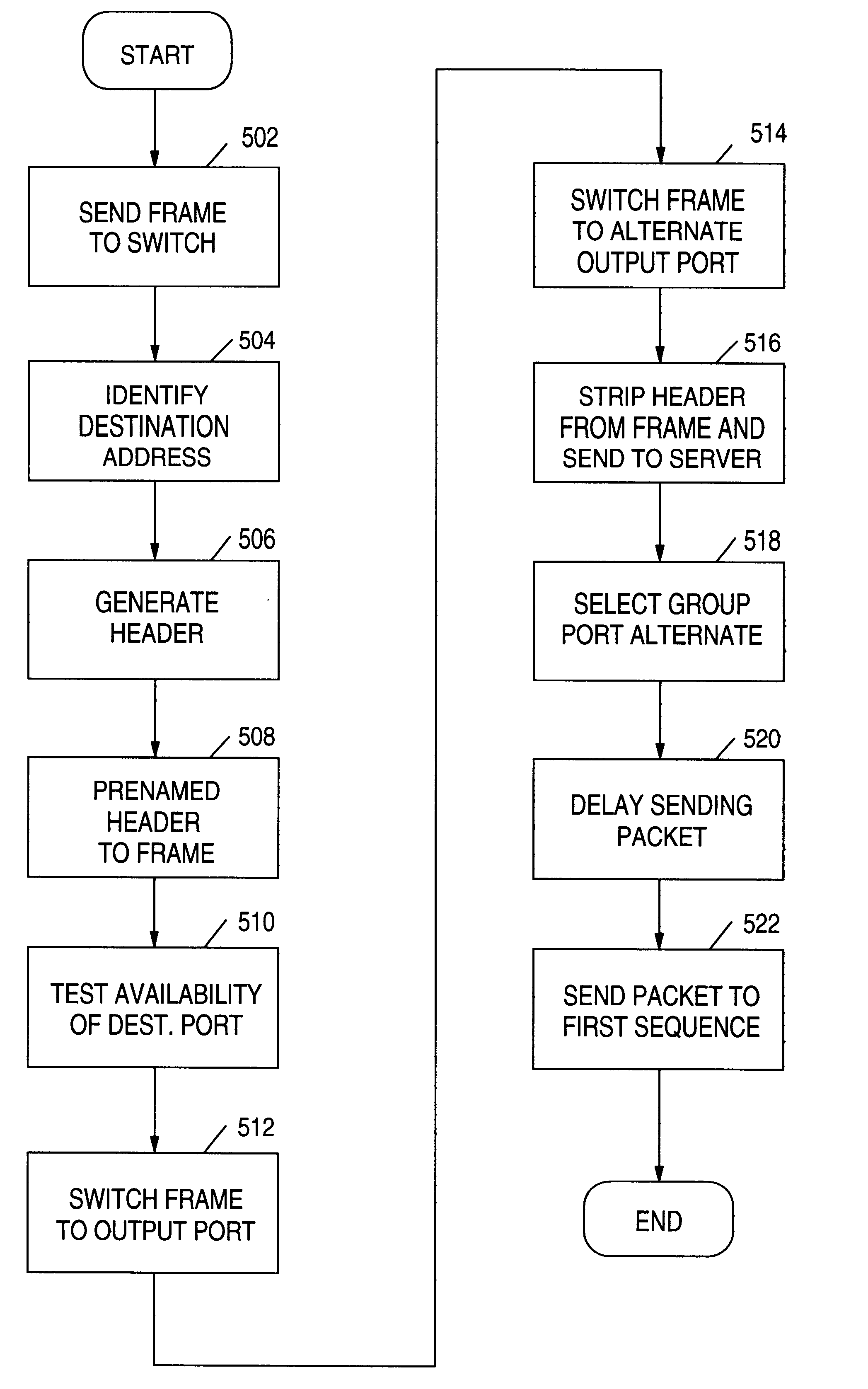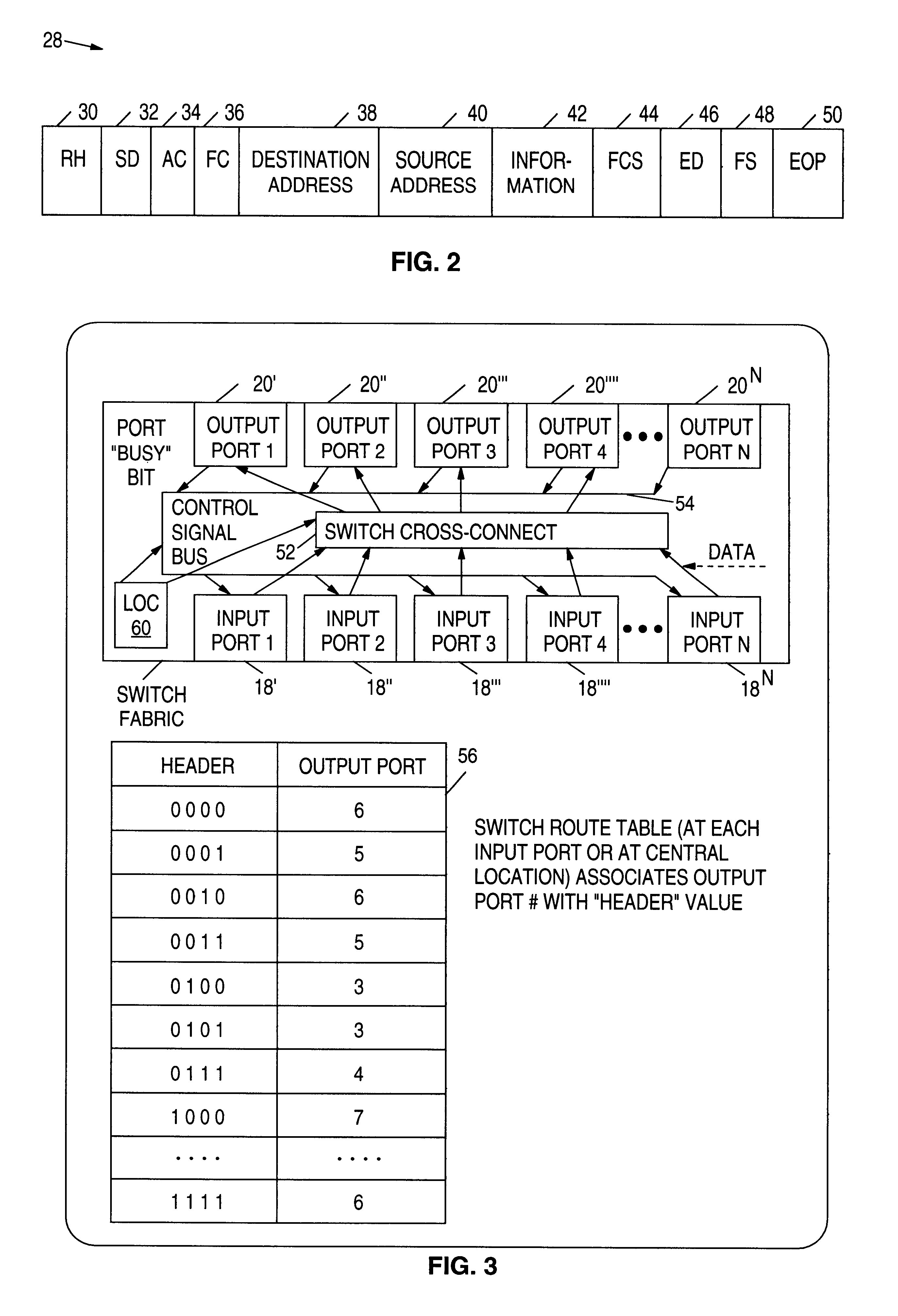Network server having dynamic load balancing of messages in both inbound and outbound directions
a network server and message technology, applied in the field of communication systems, can solve the problems of inability to meet the needs of users, etc., and achieve the effect of reducing the throughput of the network, reducing the latency of each workstation, and reducing the unbalanced nic of the server
- Summary
- Abstract
- Description
- Claims
- Application Information
AI Technical Summary
Benefits of technology
Problems solved by technology
Method used
Image
Examples
Embodiment Construction
In FIG. 1 a network switch 10 for a local area network 11 is coupled to a plurality of workstations 12'-12.sup.n for transmitting / receiving data packets or frames to be transmitted / received to / from a multi-port server 14. Each workstation includes a Network Interface Card 16' . . . 16.sup.n for transmitting and receiving data packets to and from the server 14. Each workstation is associated with a switch input port 18' . . . 18.sup.n. The switch 10 includes a plurality of destination output ports 20' . . . 20.sup.n, each output port associated with server Network Interface Card 22' . . . 22.sup.n through a channel 24' . . . 24.sup.n. The switch 10 is adapted, as will be described hereinafter, to associate a destination port 20' with the server address whereby whenever the switch transmits a data frame or packet from a workstation to a network destination address associated with the server, the switch will route the frame to a particular output or destination port of the switch that ...
PUM
 Login to View More
Login to View More Abstract
Description
Claims
Application Information
 Login to View More
Login to View More - R&D
- Intellectual Property
- Life Sciences
- Materials
- Tech Scout
- Unparalleled Data Quality
- Higher Quality Content
- 60% Fewer Hallucinations
Browse by: Latest US Patents, China's latest patents, Technical Efficacy Thesaurus, Application Domain, Technology Topic, Popular Technical Reports.
© 2025 PatSnap. All rights reserved.Legal|Privacy policy|Modern Slavery Act Transparency Statement|Sitemap|About US| Contact US: help@patsnap.com



